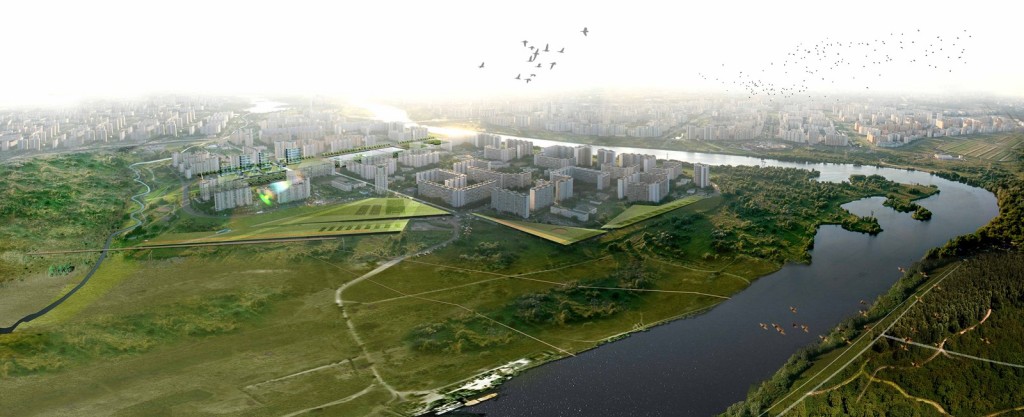At the Second Exhibition Forum on Architecture, Landscape Architecture and Garden Art last week in Moscow, the project Green River Project Brateevo has been awarded with the Russian National Award on Landscape Architecture. The project, designed by OKRA landscape architects, is a joint cooperation between Russia and the Netherlands. Supported by the Dutch Government, the Department for Natural Resource Management and Environmental Protection of Moscow and the Dutch Government Service for Land and Water management (DLG), are working together with the Dutch consultancy OKRA landscape architects, the Russian consultancy Ampir landscape architects and the Research and Design Institute for the Master Plan of Moscow on the development and exchange of ideas for a sustainable cityscape. Objective is to develop a toolkit for sustainable green development as an integral part of urban redevelopment.
Project Architect : OKRA landscape architects

Both in Moscow, a densely built mega polis, and in the Netherlands, a densely populated urbanized country, there are big challenges on how to maintain and develop a healthy green urban and peri-urban environment. Improving the quality of existing public space and cityscape and to develop new areas on a sustainable way, will improve the quality of living and create new economic, social and environmental value. Green can create so much more!
The idea of the project is to change Brateevo, a Soviet high-rise block district along Moscow river, into a vibrant and green part of the city by linking green and blue structures to the urban tissue and meanwhile activate public realm. Meanwhile these areas should get a stronger identity, and an active waterfront should be created. Connections to adjacent areas by water tram and ferries should be encouraged. Creating attractive connections will be the initial step towards an upgraded network of public realm. Metro access plus installing footpath and cyclist connections will change the balance between slow traffic and fast traffic.
Linking the inner core to the rivers will create a green-blue spine that provides access to the Moscow river and its riverfront and to Gorodnya river and its parkland. A differentiation between the north side and the east side will be interesting, creating a contrast between a continuous promenade along the river plus its parkland and a more natural ecological zone on the eastside, having long boardwalks towards the river.
Key to success will be changing the central strip. Frictions in the urban tissue, such as poor quality of some building blocks in this strip can be turned into new qualities by re-development of this strip. Related to this development the new metro connection can be a catalyst for urban transformation. By creating a new development south of the basins, interesting combinations of urban and green can be realized, creating an ensemble of intermediate size blocks.
On the medium scale public realm in Brateevo can be improved by changing the parking facilities that have been built and that closed down access to the eastern riverside. Creating a low rise car park, having a public roof and sports facilitates on top will fulfill the need of areas for sports combined with the need of parking cars.
On the large scale the green areas offer a potential for new recreational use, fitting in requirements of Moscow’s inhabitants. Revitalizing the edges, related to a built program will emphasize the green areas. Planting of the wide streets, providing an urban green structure, will also contribute to create better access to the recreational green areas. Improving linkages to adjacent green and water structures offers an opportunity to upgrade the Moscow Riverfront and Gorodnya parkland, since they will become part of a larger system. The area south of Gorodnya river is already an interesting birds reserve, only disturbed by the metro terminal. Another roof-park plus bird watch will create an essential green linkage in this natural parkland.It will also create a clear entrance to the natural areas south of Gorodnya river and will guide the visitors within the natural area .
The Russian-Dutch team of designers and policy makers will work out the master plan toward projects and thus more and more towards realization. Local knowledge, local energy, but also scientific and practical knowledge will be fully used. One thing is for sure: together, we can make the difference.